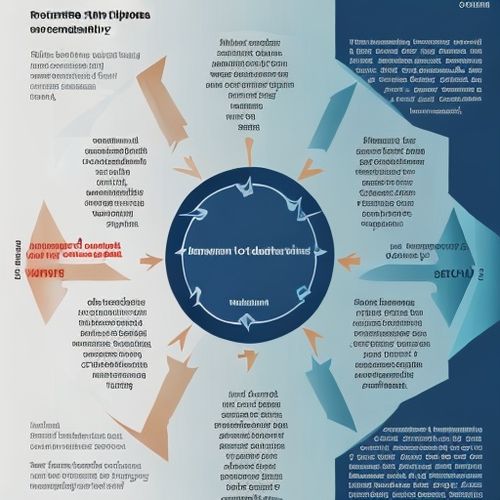Warren Buffett’s investment philosophy has long been studied and admired by investors worldwide. At the core of his strategy lies the principle of the margin of safety, a concept borrowed from his mentor Benjamin Graham. This principle emphasizes the importance of buying securities at a significant discount to their intrinsic value, thereby minimizing downside risk while leaving room for substantial upside potential. Unlike speculative trading, which relies on market timing and momentum, value investing with a margin of safety focuses on long-term wealth creation through disciplined analysis and patience.
The idea of a margin of safety is simple yet profound. It acts as a buffer against errors in judgment, unforeseen market downturns, or economic uncertainties. For Buffett, this means purchasing stocks or businesses at prices that are so low that even if the future doesn’t unfold as expected, the investment remains sound. This approach requires rigorous fundamental analysis—evaluating a company’s financial health, competitive advantages, and growth prospects—rather than relying on market trends or short-term price movements.
One of the key challenges in applying the margin of safety is accurately determining a company’s intrinsic value. Unlike market price, which fluctuates daily based on sentiment and external factors, intrinsic value is an estimate of what a business is truly worth based on its ability to generate cash flows over time. Buffett often looks for companies with strong economic moats—durable competitive advantages that protect them from rivals—such as brand loyalty, cost efficiencies, or regulatory barriers. These moats help ensure that future cash flows remain stable, making intrinsic value calculations more reliable.
Another critical aspect of the margin of safety is emotional discipline. Market cycles often lead to irrational exuberance or excessive pessimism, causing stock prices to deviate significantly from intrinsic value. Buffett’s success stems from his ability to remain unswayed by market noise. When others panic and sell during downturns, he sees opportunity. Conversely, during bull markets, he avoids overpaying for assets, even if it means holding cash while waiting for the right opportunity. This contrarian mindset is central to maintaining a margin of safety.
Buffett’s acquisition of Coca-Cola in the late 1980s exemplifies this principle. At the time, the stock was undervalued due to temporary challenges, but Buffett recognized the enduring strength of the brand and its global distribution network. By purchasing shares at a steep discount to their intrinsic value, he secured a margin of safety that paid off handsomely as the company’s fortunes rebounded. Decades later, Coca-Cola remains a cornerstone of Berkshire Hathaway’s portfolio, generating consistent dividends and capital appreciation.
However, the margin of safety isn’t just about buying cheap stocks. It also involves avoiding value traps—companies that appear undervalued but are fundamentally broken. A low price-to-earnings ratio or a high dividend yield can be misleading if the business is in decline. Buffett avoids such pitfalls by focusing on quality. He prefers wonderful businesses at fair prices over mediocre ones at bargain prices. This nuance is often overlooked by novice value investors who equate low multiples with safety.
The current market environment presents both opportunities and challenges for applying the margin of safety. With interest rates rising and economic uncertainty persisting, many high-quality companies have seen their stock prices decline. For patient investors, this could be an ideal time to build positions in businesses with strong fundamentals. On the other hand, technological disruption and shifting consumer preferences require careful analysis to ensure that a company’s competitive advantages remain intact. Blindly buying "cheap" stocks without understanding industry dynamics can erode the margin of safety.
Ultimately, Buffett’s margin of safety is more than a financial metric—it’s a mindset. It demands humility, as investors must acknowledge the limits of their knowledge and the unpredictability of markets. It also requires courage to act when others hesitate. While no strategy can eliminate risk entirely, the margin of safety provides a framework for making informed decisions that tilt the odds in the investor’s favor. In an era of instant gratification and speculative trading, this timeless principle serves as a reminder that true investing is about owning businesses, not just trading ticker symbols.

By Noah Bell/Apr 10, 2025

By Victoria Gonzalez/Apr 10, 2025

By John Smith/Apr 10, 2025

By Sarah Davis/Apr 10, 2025

By James Moore/Apr 10, 2025

By John Smith/Apr 10, 2025

By Ryan Martin/Apr 10, 2025

By Benjamin Evans/Apr 10, 2025

By Emma Thompson/Apr 10, 2025

By Megan Clark/Apr 10, 2025

By Thomas Roberts/Apr 10, 2025

By Noah Bell/Apr 10, 2025

By George Bailey/Apr 10, 2025

By Daniel Scott/Apr 10, 2025

By Benjamin Evans/Apr 10, 2025

By Amanda Phillips/Apr 10, 2025

By Sophia Lewis/Apr 10, 2025